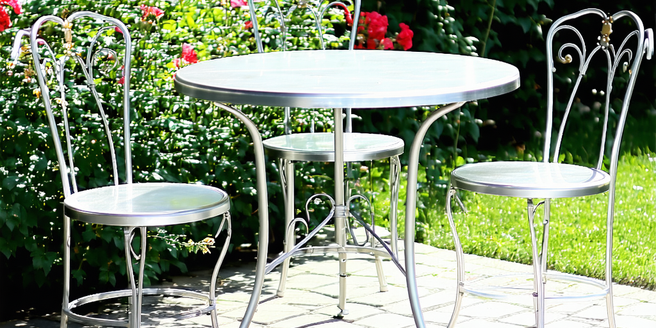
Understanding Weather Hazards for Outdoor Furniture
Outdoor furniture is often exposed to various weather conditions that can greatly affect its longevity. The key is understanding these hazards, which include rain, wind, heat, and humidity, and how they impact different materials. Rain can lead to rust and rot, especially in materials like iron and wood. Wind as a hazard can toss around lighter pieces or cause scratches and dents. The heat and UV rays from the sun can fade colors or cause fabrics to fray. Humidity may lead to the growth of mold and mildew. To extend the life of the furniture, it’s critical to identify these weather patterns and use strategies to mitigate their damaging effects.
Materials That Withstand Extreme Weather
When selecting outdoor furniture, the material choice plays a crucial role in durability against extreme weather. Aluminum is resistant to rust and lightweight, making it ideal for wet climates, though it may need anchoring against strong winds. Teak and other hardwoods have natural oils that resist moisture, which make them suitable for rainy conditions. Synthetic wicker and high-density polyethylene are UV-resistant, preventing fading or cracking from prolonged sun exposure. Stainless steel, with its anti-corrosive properties, is excellent for coastal areas. By choosing materials that cater to specific weather conditions, the chances of longevity increase, ensuring your furniture remains functional and aesthetically pleasing.
Proper Placement to Avoid Wind Damage
Proper placement of outdoor furniture is important in preventing wind damage. Keeping lightweight pieces near sturdy structures, like buildings or heavy planters, provides a natural windbreak. Avoid placing furniture in open areas where wind gusts are stronger. If possible, choose locations sheltered by natural barriers like hedges or trees, which can reduce wind speed. Grouping furniture pieces together adds stability, making them less susceptible to being knocked over by strong winds. During storms, stacking or storing items in a sheltered area is an effective preventive measure. Considering these placement strategies will better protect your furniture in windy conditions.
Anchoring Techniques to Secure Furniture
Securing outdoor furniture can prevent storm-related damage. Using weights, like sandbags or water-filled bases, adds stability to lightweight tables and chairs. Ground anchors or auger anchors offer a semi-permanent solution by tethering furniture to the ground, which is ideal for high-wind areas. Velcro straps or bungee cords can secure cushions to their bases, preventing them from flying away. Brackets and bolts offer robust security, especially for large and heavy pieces like outdoor swing sets. By incorporating these anchoring techniques, you reduce the risk of damage and ensure your outdoor setup remains in place during inclement weather.
Protective Covers: A Shield Against the Elements
Protective covers are an effective way to shield outdoor furniture from harsh weather. These covers, made from waterproof and UV-resistant materials, protect against rain, sun, and dust. They are designed to fit snugly over furniture, preventing wind from blowing them off. Using them during stormy weather protects against water damage and rust. Some covers come with vents to prevent mold and mildew from forming by allowing moisture to escape. Regularly using protective covers means less need for cleaning and maintenance, extending the lifespan of the furniture while offering peace of mind during adverse weather conditions.
Regular Maintenance for Storm-Readiness
Consistent maintenance is essential for keeping your outdoor furniture storm-ready. Regularly cleaning surfaces with mild detergent and water removes dirt and prevents material degradation. Inspect for any signs of wear, such as rust, cracks, or loose bolts, and address them promptly. Store cushions and soft materials indoors during severe weather to extend their lifespan. Re-oiling wooden surfaces restores their natural moisture and resistive properties. Checking and tightening screws and bolts on a monthly basis ensures stability. During storm seasons, remove or replace compromised elements, like frayed cushions or broken frames. Proper maintenance not only fortifies your furniture against weather events but also prolongs its serviceable life.
